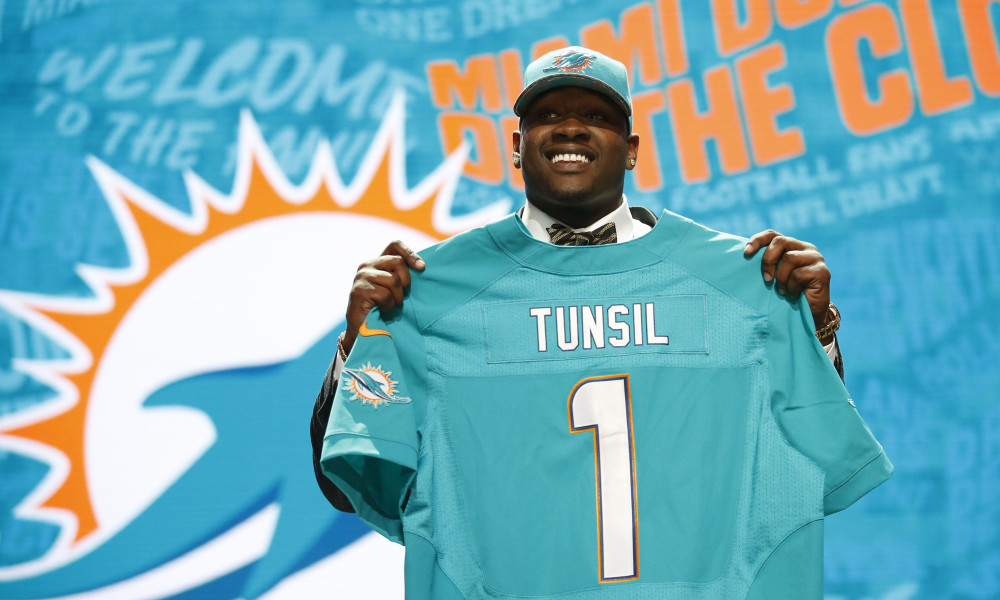What the Tunsil Gasmask Disaster Teaches Us about Crisis PR

Laremy Tunsil’s NFL draft night turned from celebration to horror, after a post on his Twitter page created a public relations disaster. The mysterious post appeared just minutes before the draft began and showed Tunsil smoking marijuana through a gas mask. He then removed the mask, revealing his identity.
In the end, Tunsil was picked No.13 overall by the Miami Dolphins, though prior to the crisis he was considered a likely No.1 pick. Tunsil’s subsequent meetings with the press to address the issue stirred up more controversy and unanswered questions. In one instance, Tunsil was escorted out of the news conference, when reporters asked if he had met with NCAA investigators.
This situation presents a textbook case of why athletes and their agents need to keep crisis PR expertise at the ready. It also shows why responding to the press without a proper strategy in place is a terrible idea.
Effects of Personal Decisions on Careers
With the continued growth and popularity of social media, people need to be more mindful of what they post and how this may affect their careers. This is because employers, potential clients, and possible partners all have access to more information about people’s personal affairs; and this information can come back to haunt them.
People whose jobs take them into close contact with the media should give this special consideration. Not only should they be mindful of what they post, but what they record, and who has access to their social media accounts.
Once something becomes public, the severity of it increases tenfold. For instance, after just one video of recreational smoking, Tunsil now faces suspicions that he has a drug problem.
However, Tunsil is not the first or only athlete to make terrible personal decisions, which filtered into their careers. Michael Vick’s dog fighting ring landed him in prison. Ray Rice’s abuse of his then-fiancée also led to public outcry against not just him, but the NFL and its handling of the situation. In short, these incidents are not uncommon.
Proper PR Response
However, having an experienced and properly trained PR team at the ready makes a world of difference when dealing with bad press.
Training Athletes
The best place to start with PR crises is at the source. Public relations experts train executives and spokespersons on how to deal with the media. Athletes can receive the same training. This may involve lessons on speaking to the press during good times and bad, how to behave in public, and what not to do when the camera is rolling, regardless of who is behind it.
Crisis Strategy
PR experts, like lawyers, know their clients well enough to know what kind of offenses to expect. They can then put in place plans and strategies to handle these incidents, should they occur. With a plan in place, athletes stand a much better chance of keeping their head above water during a crisis.
Any brand can face PR crises and bad press, but none more so than public figures. As constant targets of the media for good and bad reports, these people should keep PR experts on call to ensure they have back-up when crises strike. Otherwise, they could find themselves in the limelight for all the wrong reasons, for a very long time.
Read more from Ronn Torossian:
Ronn Torossian Personal Blog
Ronn Torossian on Medium
Ronn Torossian on LinkedIn
5WPR, Public Relations Insights & PR Firm
Ronn Torossian on Business Insider
Laremy Tunsil’s NFL draft night turned from celebration to horror, after a post on his Twitter page created a public relations disaster. The mysterious post appeared just minutes before the draft began and showed Tunsil smoking marijuana through a gas mask. He then removed the mask, revealing his identity. In the end, Tunsil was picked No.13 overall by the Miami Dolphins, though prior to the crisis he was considered a likely No.1 pick. Tunsil’s subsequent meetings with the press to address the issue stirred up more controversy and unanswered questions. In one instance, Tunsil was escorted out of the news conference, when reporters asked if he had met with NCAA investigators. This situation presents a textbook case of why athletes…